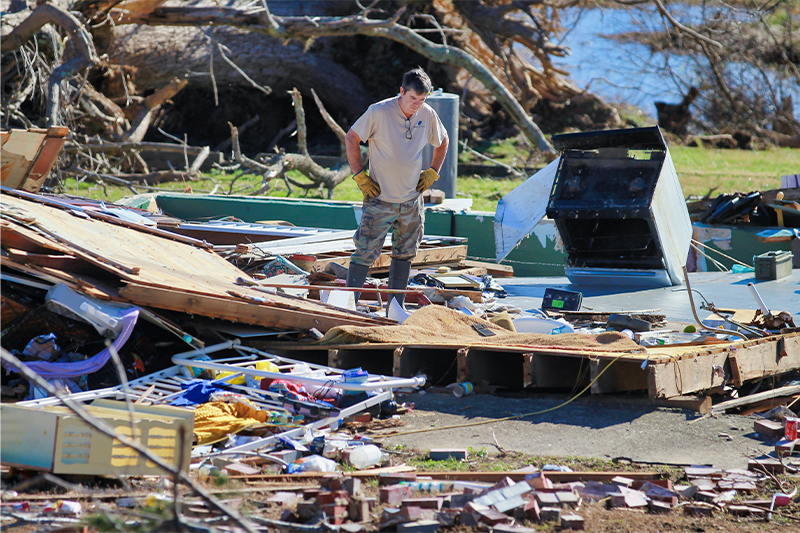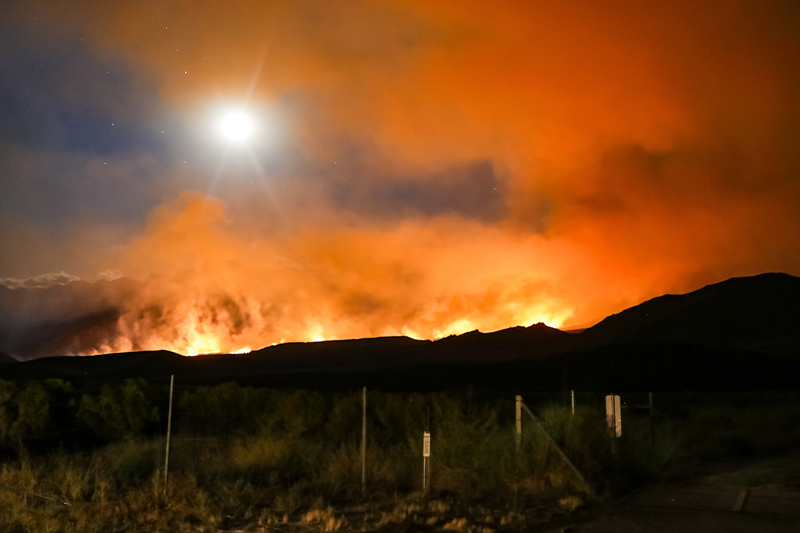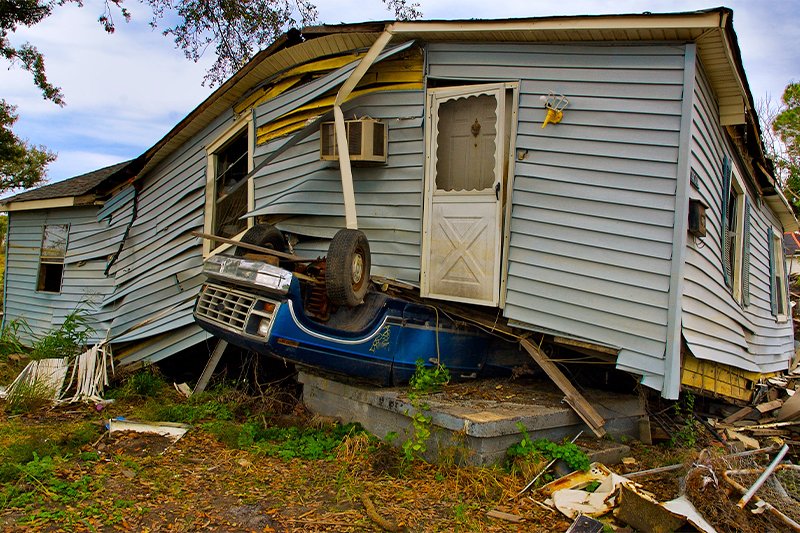
What's Ahead?
Identifying business risks is nothing new in business continuity, risk management, or resilience. Natural disasters have constantly threatened businesses, causing disruptions, financial losses, and closures. As the world grapples with the growing impact of climate fluctuations, the potential for more frequent and severe natural disasters is a looming concern. In this blog, we will explore the potential effects of natural disaster events on businesses over the next five years.
It is not a new topic for us, and we know it’s interesting to you, so let’s jump right in. Indeed, we also understand the academic stance that disasters are not natural, recognizing the human influence in the negative impacts of natural hazards. However, we will keep using the term, which is still utilized by most of our audience. It’s the same with climate change, as weather science is not our forte as much as we have picked an understanding along the way. Instead, we will focus on forecasting from a professional perspective.

Increased Frequency and Severity
Climate and weather uncertainty have intensified the frequency and severity of natural disasters. Extreme weather events like hurricanes, wildfires, floods, and droughts are becoming more commonplace. Businesses need to prepare for more frequent disruptions to their operations.
We shared our Thoughts on NOAA Billion-Dollar Weather and Climate Disasters. It outlines NOAA’s report earlier this year that describes the growing cost of disaster events. For businesses, this is an increasing concern not only from an economic perspective but also from understanding how it could impact your workforce and continuity. Additionally, we follow severe weather risks and trends, as we previously shared in blogs like Next Year’s Natural Disasters. Of course, we hope our insights are valuable as you assess the risk of your own business or clients.

Supply Chain Vulnerabilities
Global supply chains are vulnerable to natural disasters. Many companies rely on suppliers from different regions, and when a disaster strikes, it can disrupt the flow of goods and materials. Businesses may need to diversify suppliers and build more resilient supply chains. It is a global concern. Here, we want to give a shout-out to one of our colleagues, Marco Felsberger, who is providing remarkable insights into this space. If you are not already signed up for his newsletter, On the Edge of Resilience, or following him on LinkedIn, we think you should.

Rising Insurance Costs
This is an area we have some insight into. As the risks of natural disasters grow, insurance premiums are on the rise. Some businesses may find it increasingly challenging to afford comprehensive coverage, potentially exposing them to financial losses. So, you will want to ensure your business maintains the correct levels of insurance coverage.
If you have any stories or shares about insurance, put them in the comment section below. Maybe we’ll write a comprehensive blog in the future about best practices in insurance coverage for crisis events. So, let us know if that is something you are interested in.

Infrastructure Damage
Natural disasters can damage critical infrastructure like roads, bridges, and utilities. This can hinder business operations and lead to increased repair and maintenance costs. Infrastructure damage is a crucial aspect of the potential impact of natural disasters on businesses over the next five years. When we discuss infrastructure, we’re not just referring to physical structures like buildings and bridges but also to the crucial systems that keep businesses running smoothly. These include power grids, transportation networks, communication systems, and utilities.
Indeed, post-COVID, many service-oriented businesses identified the increased risk of power and network outages, with most employees working from home at least some of the time. And, at least in the US, most commercial buildings do not have generator power beyond basic life safety. We’d love to hear if your business converted any workstations into hot seats or if you continue to contract with vendors. Regardless, even for other industries, the risk of a fourth-party utility or communications provider outage is a trending risk to operational continuity.

Business Interruption
Business interruption is a crucial concern when contemplating the impact of natural disasters over the next five years. One of the most immediate impacts of natural disasters is business interruption. Companies may need to shut down temporarily, leading to revenue losses and, in some cases, layoffs or closures. Not only do you want to consider technological redundancies transferring work to personnel outside of the impacted zone, but also mutual aid agreements with other companies for temporary workspace.
When disasters strike, companies may be forced to halt their operations temporarily, leading to significant financial losses. Ensuring business continuity during these interruptions should be a top priority for organizations, necessitating robust disaster recovery plans, remote work capabilities, and insurance coverage tailored to mitigate the economic repercussions of such disruptions.

Data Security Concerns
In the age of digital business, data security is paramount. Natural disasters, such as cyberattacks during or following a disaster, can result in data breaches, compromising sensitive information and damaging a company’s reputation. Future-proofing businesses against natural disasters involves addressing data security concerns to ensure that sensitive information remains safeguarded during and after any disruptive event. A lesson learned from many after Hurricane Katria was that local banks and town halls flooded, destroying vital documentation.

Regulations and Compliance
Governments are introducing stricter regulations related to disaster preparedness and environmental responsibility. Businesses must adapt to these changes, potentially incurring additional compliance costs. Compliance with evolving laws is vital for business continuity during disasters, as it ensures that organizations adhere to the necessary standards to operate safely and effectively in the face of such challenges. Indeed, country regulators’ demand that critical financial institutions adopt operational resilience is increasing, as shared in Organizational Vs. Operational Resilience.

Reputation Management
The way businesses respond to natural disasters can significantly affect their reputation. Poor disaster management or lack of support for affected communities can lead to public relations nightmares and loss of customer trust. It’s essential to recognize that as much as businesses attempt to be self-contained with their crisis response, companies operate within communities. It’s a point we shared in a blog back in 2019, California Earthquake – All Disasters Are Local. It is now a must-have that your communications and brand department execute crisis communications effectively.

Remote Work Challenges
In an increasingly remote work environment, businesses must ensure employees can work effectively during and after a disaster. This may require investments in technology and disaster recovery plans. Remote work during disasters has become increasingly critical, allowing employees to continue their tasks even when physical office spaces are compromised, emphasizing the importance of robust remote work infrastructure. As we look to the future, businesses must invest in secure communication tools and disaster-ready technology to ensure seamless remote work capabilities during various crisis scenarios, bolstering their overall resilience.

Innovation and Adaptation
On a positive note, businesses can innovate and adapt to mitigate the impact of natural disasters. This includes implementing sustainable practices, investing in resilient infrastructure, and creating disaster preparedness plans. Innovation in disaster preparedness is the key to enhancing a business’s ability to adapt, respond, and recover effectively, ensuring a competitive edge in an unpredictable and rapidly changing landscape. Certainly, we’d recommend leveraging operational resilience. We also advocate for a company-wide Organizational Resilience strategy.

Final Thoughts
The potential impact of natural disasters on businesses over the next five years is a pressing concern. While the challenges are significant, proactive measures can help companies adapt, survive, and thrive in an increasingly uncertain climate. Businesses that prioritize disaster preparedness, resilience, and sustainability will be better positioned to weather the storms, literally and figuratively.
Are you ready to future-proof your business against the looming threat of natural disasters? Join us in the journey towards enhanced resilience. Explore our comprehensive guidance on disaster preparedness and operational resilience strategies throughout our blogs. Let’s work together to ensure your business survives and thrives in adversity. Click here to start building a more resilient future for your company today.
Calling All Resilience Champions!
Don’t miss a beat with Disaster Empire – your gateway to groundbreaking insights and exclusive content.
Get ahead of the game by signing up NOW! Be an insider and be the FIRST to access our power-packed blog posts every Tuesday.
Unleash a world of knowledge with each blog – we’ve got it all! We’ve got your back from embedded links to source materials, captivating articles, eye-opening videos, must-read books, and top-notch training! Click on the blue link to dive into an ocean of valuable resources.
Take resilience to new heights with our captivating podcast! Featuring exclusive interviews with thought leaders and innovators, this is YOUR ticket to inspiration and progress! Available on YouTube and YouTube Music for your ultimate viewing and listening pleasure.
Don’t wait! The excitement starts every Tuesday with our blog posts, and we’re not done yet – every Thursday, a fresh, invigorating podcast awaits you.
Join our growing community of change-makers and conquer challenges with Disaster Empire! Together, we’ll shape a resilient future!
